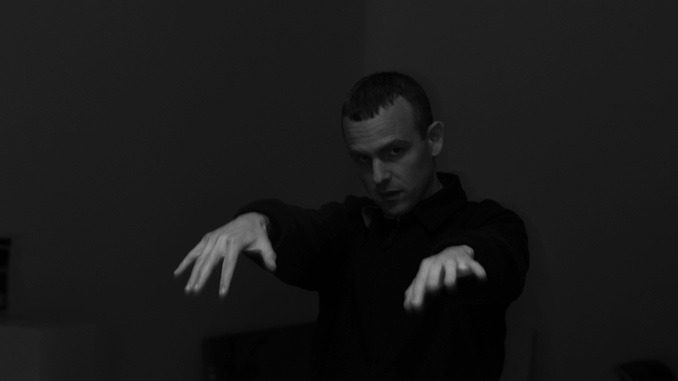To tell the truth, the only reason I was sitting in Bristol’s Paramount Theatre on this particular afternoon was because the place had padded seats and air conditioning. It was the second day of 2019’s Bristol Rhythm & Roots Reunion and unseasonably warm. So I walked from the Virginia side of State Street to the theater on the Tennessee side to get off my feet and cool down.
Once I settled into my seat, though, it wasn’t long before the woman on stage broke through my distraction and grabbed my attention. I wasn’t expecting much from a local performer I’d never heard of, but this singer/songwriter had something. This lithe woman with knee-high boots and graying twin ponytails poking out from under a brown cap possessed a powerful soprano and knew how to shape a melody and a story.
Her name was Annie Robinette, a Bristol native who’d done some acting and had won some regional songwriting contests. But there are thousands of singer/songwriters across America with nice voices and confessional songs. What made this one stand out was her actress’s instinct for drama, for refusing to give an audience what it wanted.
This was most evident on her song “Jane,” sung in the persona of a woman who gave up her baby for adoption and can’t pretend to be a mother now. “If you’re looking for a happy ending,” she tells her daughter, “I can’t give you one of those.” And whether she sang about divorce, drug habits or gold diggers, she stubbornly avoided the sentimentality that gums up so much singer/songwriter music. After the show, I discovered that Robinette had released three albums with limited distribution. I got them all.
We discover new music in so many ways. If you’re in a job like mine, you constantly have publicists pushing you to get interested in their latest client. If you’re an ordinary listener, you constantly have people like me pushing you to get interested in our own favorites. If it’s not a journalist like me, it’s the music director of a radio station or the curator of a streaming playlist. And all of those are useful vehicles for finding new music.
But sometimes the most satisfying musical discoveries are those that arrive when you’re least expecting them. Maybe you hear a song in the background of a movie or TV show. Maybe you’re riffling through the LPs at a used-record store and you see an album that catches your eye—maybe it’s the cover photo or the name of the guest guitarist. Maybe the opening act at a concert impresses you as much as the act you came to see. Maybe you go to a festival and sit down for a moment to rest and hear something better than the names you know.
The trick to making such discoveries is to strike the right balance between openness and skepticism. You don’t want to assume that just because you’ve never heard of somebody they can’t be very good. Nor do you want to assume that anything in a genre that you’re not already interested in isn’t worth bothering with. You’ll miss out on some very good music that way.
On the other hand, you don’t want to mistake novelty for quality. Just because something is new and unusual doesn’t mean it’s actually good. If you don’t have a little skepticism, you’ll end up with a lot of albums that you listen to once and never again. You have to develop your own aesthetic radar that can detect value whatever the genre or level of name recognition.
When I travel overseas, I like to find used-record stores where one of the clerks knows enough English to help me find what I’m looking for. It might be a shopping mall record store in Hong Kong or Seville; it might be a stand in a flea market in Lima or Saigon. I explain that I want artists who are rooted in local traditions but who use that legacy in new and interesting ways, like Bob Dylan did with American folk music or Eric Clapton did with American blues.
Last fall, when I was in Santiago, a city rocked by anti-government protests, I asked around for a used-record store, something as hard to find there as in most American cities in this streaming era. I was directed to a shopping arcade a block off the cathedral’s central square. Hunting through the corridors of phone stores and computer stores, I found a hole-in-the-wall shop crammed full of CDs and LPs.
The women running the shop had a little English, enough to understand what I was asking for. They started pulling out CDs to recommend. I had already heard of Violeta Parra, Chile’s legendary folk singer, but I hadn’t heard of Los Jaivas, a folk-rock band that mixed traditional Chilean folk instruments with a rock ‘n’ roll rhythm section to create a beguiling blend not unlike the Fairport Convention or Nitty Gritty Dirt Band.
I walked away with a two-CD, greatest-hits collection and a video of the band performing their musical adaptation of Pablo Neruda’s long poem, “The Heights of Machu Picchu” on the site of that famous Peruvian ruin. I had been to Neruda’s home the day before, and I had been to Machu Picchu in 2004, so it was especially resonant for me. When I got home and listened to them all, the music was wonderful, but just as satisfying was the adventure of hunting for it and finding it.
When I was in Peru in 2005, I took a taxi to a flea market where one guy had set up a stand with stacks of bootleg CDs and a boom box on which to play them. I picked out a dozen interesting looking albums, listened to a track or two from each and purchased half of them. My best find was a record by Los Pumas de la Selva (the Pumas of the Jungle), a group that offered repeating vamps on clarinet or flute over rampaging drums that sounded more than a little like Ornette Coleman’s recordings with the Moroccan musicians of Jajouka.
That got me interested in music from the Peruvian Amazon, and I visited Iquitos, the largest city on Peru’s portion of the Amazon River, a city so cut-off that it can only be reached by boat or air, because no roads connect it to the rest of the nation. As I ventured into the jungle and encountered piranhas, giant sloths and capybaras, I began to understand how such an isolated place could produce such distinctive music.
Ten years later I attended a festival of Afro-Peruvian music sponsored by the Smithsonian Institution on the Washington Mall. My favorite band of the day was Los Fabulosos Wemblers, five brothers from Iquitos who mixed the jungle sound of Los Pumas with the popular cumbia of Lima, replacing the Amazonian horns with surf guitar.
In yet another bid to crack the American market, the renamed Los Wembler’s {cq} de Iquitos recently released a U.S. album called Vision del Ayahuasca. Ayahuasca is the mind-altering juice made from Andean vines and shrubs by mountain shamans to induce visions in traditional ceremonies. And there is a psychedelic tinge to this new album as Alberto Sanchez’s Jerry Garcia-like chains of piercing guitar notes wrap around the cumbia beat and the chanted vocals to distend them into wonderful new shapes. The twisting paths of the guitar solos mimicked my own twisting path to find this delightful band.
Let me give you another example of stumbling into a musical discovery. During the 2019 Winter Jazzfest, only one event took place outside Manhattan, but it was worth the long subway ride and long walk to the Brooklyn Steel venue to see my old favorites Medeski, Martin & Wood. This superb jazz fusion trio rarely performs anymore, because drummer Billy Martin hates to travel. But he still sounded great interacting with keyboardist John Medeski and bassist Chris Wood, the latter now co-leader of the Americana trio, the Wood Brothers, who have just released a terrific album, Kingdom in My Mind.
I was unfamiliar with the other act on the bill: Alarm Will Sound. I soon learned that they were an 18-person, avant-classical ensemble not only sharing the bill with Medeski, Martin & Wood but actually collaborating with them on material from a new joint album, Omnisphere. Unlike most art musicians crossing into jazz, the five reeds, five strings, three brass, three percussionists and pianist of Alarm Will Sound sounded comfortable improvising and making harsh sounds seem natural. Even when they played on their own, Alarm Will Sound displayed a welcome looseness that one too rarely hears in Western art music.
I’m always interested in finding classical artists who can absorb influences from progressive pop and jazz without sounding like they’re slumming or conducting a science experiment. To such finds as Mother Falcon, Eighth Blackbird and Brooklyn Rider, I could now add Alarm Will Sound. And the surprise of the discovery was almost equal to the pleasure of the music.
I can heartily endorse all the artists mentioned in this essay. But to merely accept my recommendations would nullify the point I’m trying to make. Everyone who cares about music should be alert to the possibility of great music lurking in unexpected places. Show up early for the opening act; venture into flea markets in strange locales, wander around a festival until something unexpected catches your ear. Be open enough to recognize the good and skeptical enough to recognize the mediocre.
Here’s a list of my 50 favorite non-jazz, new-music releases of 2019:
1. Rhiannon Giddens with Francesco Turrisi: There Is No Other (Nonesuch)
2. Craig Finn: I Need a New War (Partisan)
3. Lizzo: Cuz I Love You (Atlantic)
4. The North Mississippi Allstars: Up and Rolling (New West)
5. Mika: My Name Is Michael Holbrook (Universal)
6. Justin Townes Earle: The Saint of Lost Causes (New West)
7. The Mavericks: The Mavericks Play the Hits (Mono Mundo/Thirty Tigers)
8. Tyler Childers: Country Squire (RCA)
9. Allison Moorer: Blood (Autotelic)
10. Bruce Springsteen: Western Stars: Songs from the Film (Columbia)
11. Miranda Lambert: Wildcard (RCA)
12. Buddy & Julie Miller: Breakdown on 20th Ave. South (New West)
13. Charley Crockett: The Valley (MONO)
14. The Hold Steady: Thrashing Thru the Passion (Frenchkiss)
15. Rodney Crowell: Texas (RC1)
16. Erin Enderlin: Faulkner County (Blaster)
17. Patty Griffin: Patty Griffin (PGM/Thirty Tigers)
18. Jimmy “Duck” Holmes: Cypress Grove (Easy Eye)
19. The Strumbellas: Rattlesnake (Glassnote)
20. Billie Eilish: When We Fall Asleep, Where Do We Go? (Interscope)
21. Vampire Weekend: Father of the Bride (Spring Snow/Columbia)
22. Black Pumas: Black Pumas (ATO)
23. Willie Nelson: Ride Me Back Home (Legacy)
24. Dervish: The Great Irish Songbook (Rounder)
25. Gary Clark Jr.: This Land (Warner)
26. Khalid: Free Spirit (Right Hand/RCA)
27. Steve Riley & the Mamou Playboys: 30 Years Live! (Valcour)
28. Bob Mould: Sunshine Rock (Merge)
29. Matt Mitchell: Phalanx (Ambassadors)
30. Maggie Rogers: Heard It in a Past Life (Capitol)
31. Taylor Swift: Lover (Republic)
32. Fontaines D.C.: Dogrel (Partisan)
33. Steve Earle: Guy (New West)
34. Sleater-Kinney: The Center Won’t Hold (Mom + Pop)
35. Flight of the Conchords: Live in London (Sub Pop)
36. Charlie XCX: Charli (Asylym/Atlantic)
37. Molly Tuttle: When You’re Ready (Compass)
38. Lil Nas X: 7 (Columbia)
39. Katie Toupin: Magnetic Moves (Toupin)
40. Ian Noe: Between the Country (Thirty Tigers)
41. Orville Peck: Pony (Sub Pop)
42. The Mekons: Deserted (Bloodshot)
43. Toronzo Cannon and the Chicago Way: The Preacher, the Politician or the Pimp (Alligator)
44. Cody Jinks: The Wanting (Late August)
45. David Byrne: American Utopia on Broadway (Original Cast Recording) (Nonesuch)
46. Kelsey Waldon: White Noise/White Lines (Oh Boy)
47. Jenny Lewis: On the Line (Warner Bros.)
48. Jesse Malin: Sunset Kids (Wicked Cool)
49. Michael Kiwanuka: Kiwanuka (Polydor/Interscope)
50. Mavis Staples: We Get By (Anti-)




